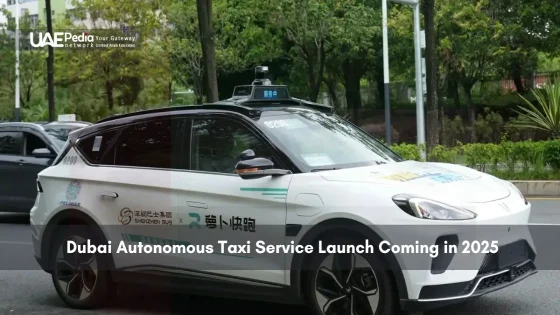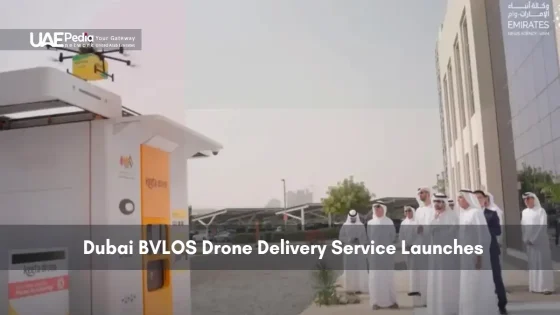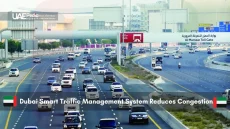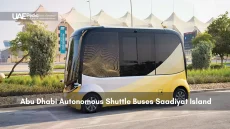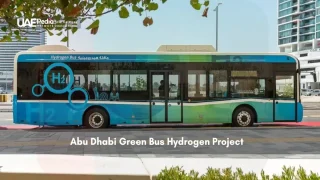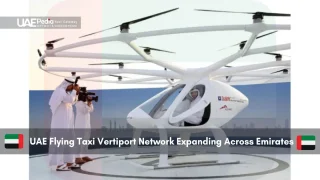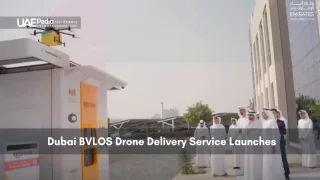By 2025, 25% of all trips in this city could be made without a steering wheel. That’s not sci-fi—it’s Dubai’s bold plan to reshape how we move. With trials for 50 driverless vehicles kicking off soon, the emirate is accelerating toward a milestone that could redefine urban mobility worldwide.
What makes this project stand out? It’s not just about swapping drivers for algorithms. The initiative blends artificial intelligence, real-time data analysis, and next-gen infrastructure—all designed to create seamless journeys. Think of it as a symphony of sensors and smart roads, where every turn is optimized before you even buckle up.
Global tech leaders and local authorities are collaborating like never before. Recent trials have already logged thousands of successful autonomous trips, proving the system’s reliability. This isn’t just a local upgrade—it’s a blueprint for cities chasing smarter, safer transport solutions.
- Why 2025 matters: A citywide shift to driverless tech could cut traffic delays by 20% while boosting road safety.
- Behind the scenes: Partnerships with companies like Baidu’s Apollo Go highlight Dubai’s strategy to merge global innovation with regional expertise.
Overview of Dubai’s Autonomous Taxi Initiative
Imagine streets where vehicles navigate without a driver—this vision inches closer as a major city gears up for its 2025 mobility revolution. What started as pilot tests will soon evolve into a full-scale network reshaping how residents and visitors move.
Introduction to the 2025 Launch Timeline
The roadmap unfolds in three phases. Starting this year, 50 self-driving cars will hit select routes, gathering real-time insights to refine algorithms. By late 2024, the fleet expands to cover high-demand corridors like Downtown and Business Bay.
| Phase | Timeline | Key Actions |
|---|---|---|
| 1 | 2023-2024 | Test 50 vehicles, optimize sensor networks |
| 2 | 2024-2025 | Expand fleet, integrate AI traffic management |
| 3 | 2025+ | Full deployment across 25% of transport routes |
Significance for Dubai’s Transportation Landscape
This isn’t just about replacing drivers—it’s a complete reimagining of urban logistics. Sensors embedded in roads communicate with cars, adjusting routes milliseconds before congestion forms. Think of it as a dance between infrastructure and innovation.
Local authorities partner with tech giants like Baidu’s Apollo Go to blend global expertise with regional needs. Their memorandum focuses on safety protocols and cultural adaptation—ensuring the system respects local driving habits while pushing boundaries.
Each phase builds public trust through transparency. Early riders can expect free trial periods, with feedback shaping future rollouts. By 2025, the goal isn’t just efficiency—it’s crafting a blueprint other cities might follow.
Insights into the “dubai autonomous taxi service launch” and Strategic Partnerships
Behind every tech revolution stands a powerhouse team—and this mobility leap is no exception. Picture Roads and Transport Authority experts huddling with Baidu’s Apollo Go engineers, merging desert-road wisdom with Silicon Valley-grade code. Their secret weapon? A recent announcement about aerial mobility plans that complements ground-level innovations.
Global Minds, Local Insights
Ahmed Hashim Bahrozyan (RTA’s CEO) and Liang Zhang (Baidu’s VP) didn’t just sign paperwork—they bridged continents. Baidu brings 27 million miles of autonomous driving data from Beijing winters to California highways. RTA contributes intimate knowledge of peak-hour Sheikh Zayed Road traffic patterns. Together, they’re training AI to navigate Friday mosque rushes and sandstorm visibility drops.
More Than a Handshake Agreement
The memorandum of understanding acts like a turbocharger for scaling. Phase one’s 50 vehicles will grow to 1,000 within three years—think of it as a “stress test” for smart infrastructure. Safety protocols get customized: sensors now detect sudden lane changes common in UAE driving culture, while algorithms prioritize school zones during pickup times.
Mattar Tayer, RTA’s Director General, puts it best: “We’re not importing solutions—we’re coding them into our DNA.” This collaboration marks Apollo Go’s first international expansion beyond China, blending Emirati ambition with Beijing-born tech muscle. As trial routes expand from Business Bay to Global Village, these partnerships prove innovation thrives where desert sands meet cloud servers.
Technology and Safety Measures in Autonomous Taxis
What’s under the hood of these futuristic rides? Think 40 eyes scanning the road—each one a sensor working like a high-tech orchestra. The sixth-generation RT6 model from Apollo Go packs LiDAR, cameras, and radars that map surroundings 10 times faster than you blink. It’s not just tech—it’s peace of mind engineered into every mile.
Seeing the Unseen: Sensor Superpowers
Picture this: 360-degree awareness even during sandstorms. The RT6’s sensor suite detects pedestrians 200 meters ahead—roughly two football fields. Algorithms process 5 terabytes daily (that’s 1,250 HD movies) to predict delivery trucks changing lanes or cyclists swerving. “Safety isn’t an add-on—it’s the blueprint,” says an Apollo engineer.
Proving Grounds: From Lab to Highway
Before hitting streets, these vehicles clocked 500,000 simulated miles across digital twins of Downtown Dubai. Real-world trials collect data from every turn—brake response times, traffic light interactions, even sudden camel crossings. Here’s how they’re stress-testing the future:
| Phase | Duration | Key Activities | Sensors Tested |
|---|---|---|---|
| 1 | 6 months | Urban navigation, emergency stops | LiDAR, thermal cameras |
| 2 | 4 months | Peak-hour traffic handling | Ultrasonic, 360° cameras |
| 3 | Ongoing | Adverse weather trials | Radar, moisture detectors |
Data Highways Meet Real Roads
Every ride feeds a central brain—updating maps, tweaking routes, and spotting potholes before they form. During recent operational trials, machine learning adapted to local driving styles, like last-minute exits on Sheikh Zayed Road. The result? Smoother merges and 30% fewer hard brakes during rush hour.
This isn’t just about getting from A to B. It’s a live lab where each trip teaches the system to handle tomorrow’s challenges—today. And honestly? That’s how revolutions roll.
Looking Forward: Embracing a New Chapter in Autonomous Mobility
As the Emirates gears up for a transformative leap in how we move, this journey feels less like a tech upgrade and more like rewriting the rules of urban life. Strategic collaborations—like the Roads and Transport Authority teaming up with Apollo Go—pave the way for smarter streets. Their roadmap? A fleet scaling to 1,000 self-driving units within three years, blending global AI muscle with hyperlocal insights.
This evolution builds on real-world wins: sensor networks predicting traffic snarls before they form, algorithms adapting to desert weather, and safety protocols fine-tuned for school zones. It’s not just about vehicles—it’s about crafting ecosystems where innovation thrives. Mattar Tayer’s team proves leadership means coding solutions into a city’s DNA, not importing them.
The coming months will spotlight how partnerships spark global ripples. Apollo’s first international expansion marks a milestone, merging Silicon Valley-grade tech with Emirati ambition. Imagine roads where every ride teaches the system to handle tomorrow’s challenges—today.
Ready to explore what’s next? Track progress here as we turn bold visions into daily commutes. The future isn’t just arriving—it’s inviting you to hop in.
The Roads and Transport Authority (RTA) plans to roll out its first phase of autonomous taxis in 2025, with testing and infrastructure adjustments underway. Expect limited routes initially, expanding gradually across the city.
By integrating Baidu’s Apollo Go technology with Dubai’s smart-city infrastructure, this project positions the UAE as a global leader in self-driving transport. It’s designed to reduce traffic, lower emissions, and offer 24/7 AI-powered rides.
The RTA collaborates with Baidu’s Apollo Go—the first international expansion of China’s top autonomous vehicle platform. Mattar Al Tayer, RTA Director-General, emphasized this partnership as key to Dubai’s “Smart Self-Driving Transport Strategy.”
Vehicles use LiDAR, 360° cameras, and real-time AI analytics to navigate. The RTA mandates rigorous testing phases on closed tracks before public deployment, with remote human oversight available during early operations.
Sensors collect traffic patterns, weather data, and passenger feedback to optimize routes and energy use. This big-data approach helps Dubai refine its mobility ecosystem while maintaining privacy standards.
Not immediately. Autonomous vehicles will complement existing transport options, focusing first on tech hubs like Silicon Oasis. The RTA aims for 25% of trips to be driverless by 2030, blending innovation with current infrastructure.
